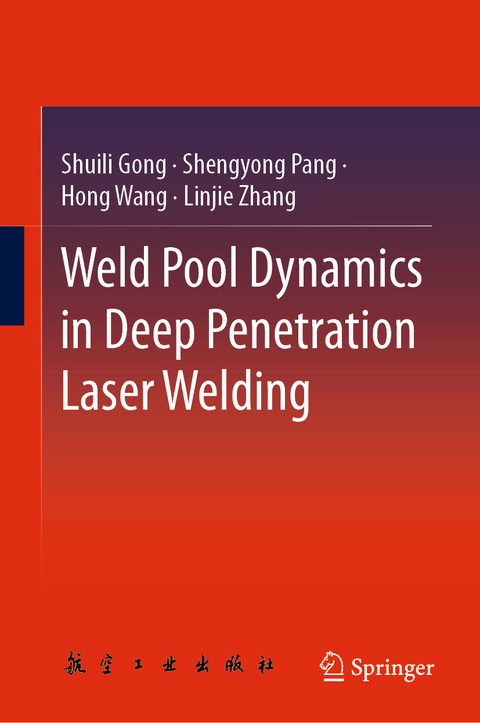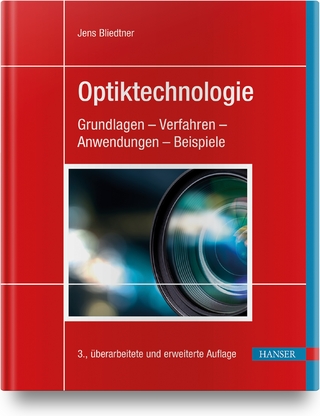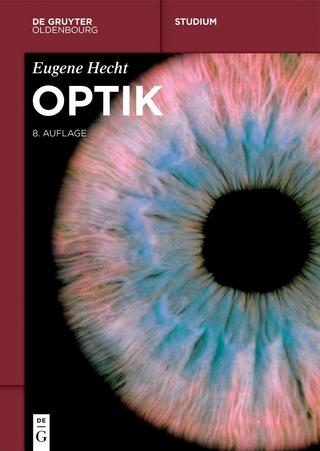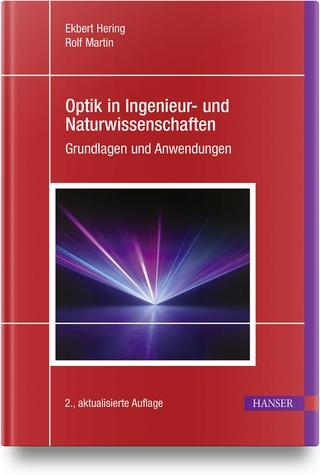
Weld Pool Dynamics in Deep Penetration Laser Welding
Springer Verlag, Singapore
978-981-16-0787-5 (ISBN)
Dr. Shuili Gong received his Ph.D. degree from Department of Materials Science and Engineering, Xi’an jiaotong University in 2001. Currently Dr. Gong is Deputy Chief Engineer of AVIC BAMTRI (Beijing Aeronautical Manufacturing Technology Research Institute) and the Principle Technology Specialist of AVIC in non-traditional machining subject and executive Vice-President of National Key Laboratory for Power Beam Processing Technology, China. Dr. Gong is also appointed as part-time Professor in many Universities including Dalian University of Technology, Beijing University of Technology, and Shenyang University of Aeronautics and Astronautics. Dr. Gong focuses on the researches of power beam (laser/electron beam/plasma) processing technoliges including welding, cutting, additive manfaucturing and surface engineering. Dr. Gong received the prestigious Brooker Award from TWI Ltd (2013), and has 85 patents and published more than 200 technical papers. Dr. Shengyong Pang received his PhD degree from Huazhong University of Science and Technology (HUST) in 2011. Currently, Dr. Pang is a professor of State Key Laboratory of Materials Processing and Die & Mould Technology, HUST and directed the Computational Welding and Additive Manufacturing (CWAM) group of HUST since 2011. Dr. Pang focuses on the research of understanding the process physics of high-density beam welding and additive manufacturing. Dr. Pang has developed finite volume and finite element software for predicting thermal fluid and stress behaviors in fusion welding and additive manufacturing. These software have been increasingly used in aerospace, shipbuilding, chemical, transportation and IC companies and commercialized by industries. Dr. Pang has published more than 60 papers in refereed journals and coauthored a book on laser welding. Dr. Pang received the National Science Fund for Excellent Young Scholars award in 2020. Dr. Hong Wang received his PhD degree from Beijing University of Technology. Currently Dr. Wang is an Associate Professor at School of Materials Science and Engineering, Taiyuan University of Science and Technology, P. R. China. Dr. Wang has over 30 publications in peer reviewed journal. Dr. Wang focuses on the research of laser welding and additive manufacturing. Dr. Linjie Zhang obtained his BSc degree in welding technology and equipment from Harbin Institute of Technology in 1995 and a PhD degree in materials processing engineering from Xi’an Jiaotong University in 2008. Dr. Zhang is a Professor at School of Materials Science and Engineering, Xi’an Jiaotong University, Xi'an, P.R. China. Dr. Zhang has over 100 publications in peer reviewed journals and conference proceedings and over 10 patents related to laser materials processing. His research is in the area of laser materials processing, with focus on molten pool behavior prediction and control based on CFD simulation of various welding processes and additive manufacturing processes.
Chapter 1: Laser Welding Basics.- Chapter 2: Model of Quasi-Steady Weld Pool Dynamics and Numerical Simulation.- Chapter 3: Model of Quasi-Steady Weld Pool Dynamics and Numerical Simulation.- Chapter 4: Simulation of Transient Keyhole and Weld Pool.- Chapter 5: Dynamic Behaviors of Metal Vapor / Plasma Plume inside Transient Keyhole.- Chapter 6: Behaviors of Keyhole and Weld Pool under the Effect of Side-Blown Gas.- Chapter 7: Keyhole and Weld Pool Dynamics in Dual-Beam Laser Welding.- Chapter 8: Keyhole and Weld Pool Dynamics in Laser Welding with Filler Wires.- Chapter 9: Dynamical Behaviors of Keyhole and Weld Pool in Vacuum Laser Welding.
| Erscheinungsdatum | 30.04.2021 |
|---|---|
| Zusatzinfo | 171 Illustrations, color; 39 Illustrations, black and white; XVII, 280 p. 210 illus., 171 illus. in color. |
| Verlagsort | Singapore |
| Sprache | englisch |
| Original-Titel | Jiguang Hanjie Rongchi Donglixue Xingwei |
| Maße | 155 x 235 mm |
| Themenwelt | Naturwissenschaften ► Physik / Astronomie ► Optik |
| Technik ► Elektrotechnik / Energietechnik | |
| Technik ► Maschinenbau | |
| Schlagworte | Dielectric Loss • Electromechanically Coupled System • energy flow • Energy harvesting • Equivalent impedance • integrated analysis • Piezoelectric Material • Switching interface circuit • Vibration damping • wireless sensor network |
| ISBN-10 | 981-16-0787-7 / 9811607877 |
| ISBN-13 | 978-981-16-0787-5 / 9789811607875 |
| Zustand | Neuware |
| Haben Sie eine Frage zum Produkt? |
aus dem Bereich


